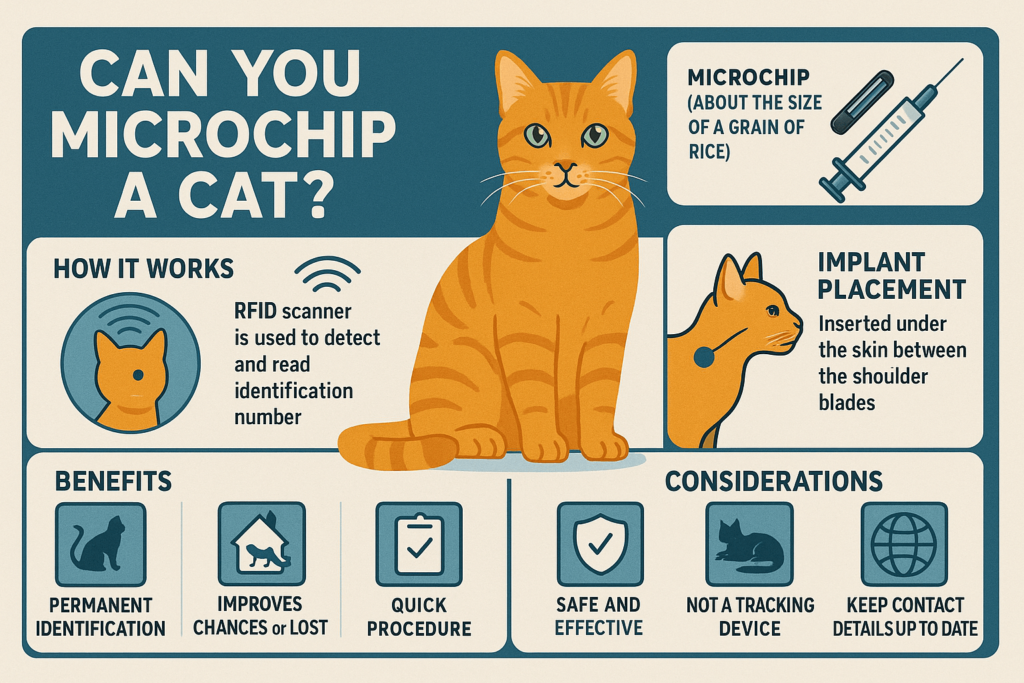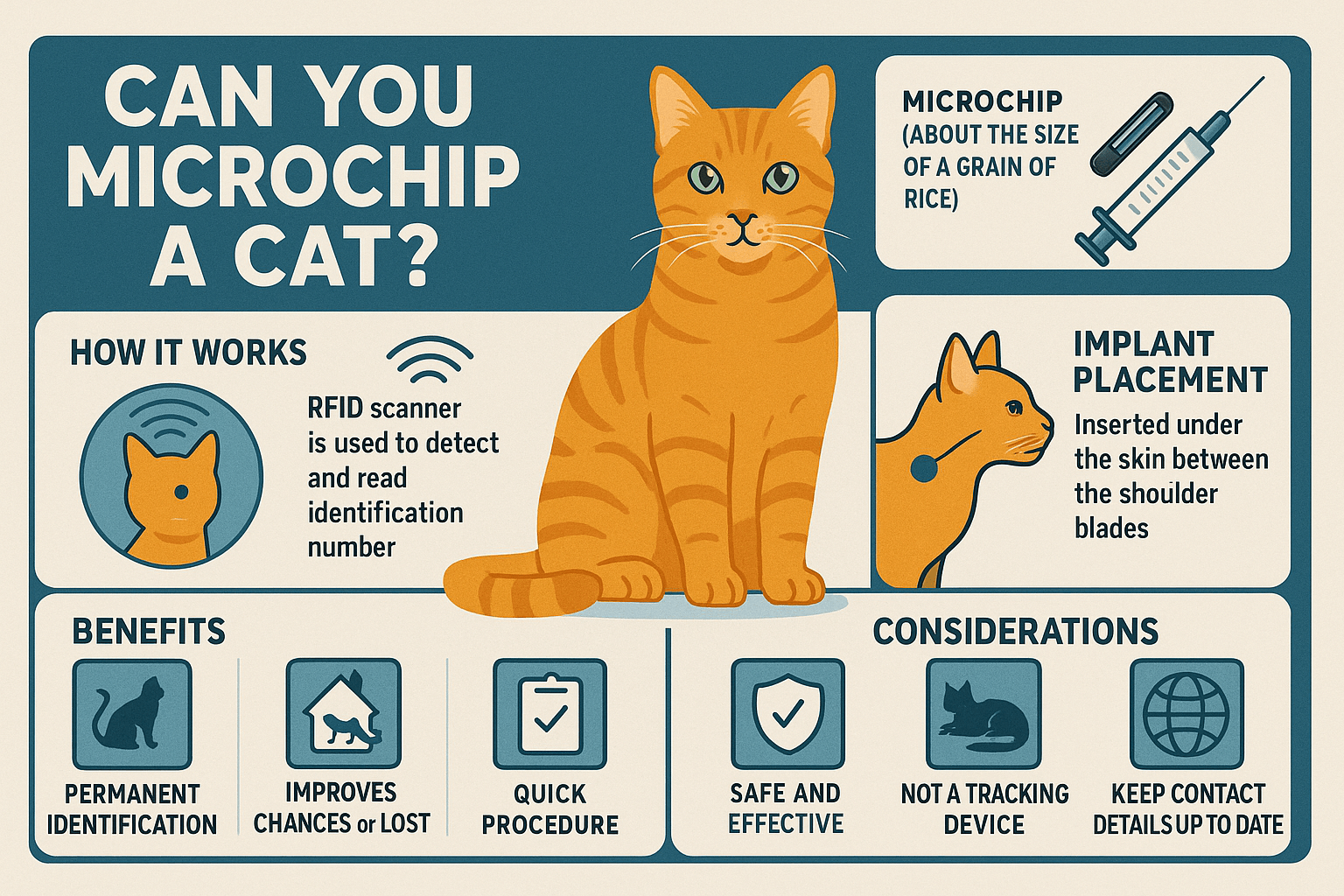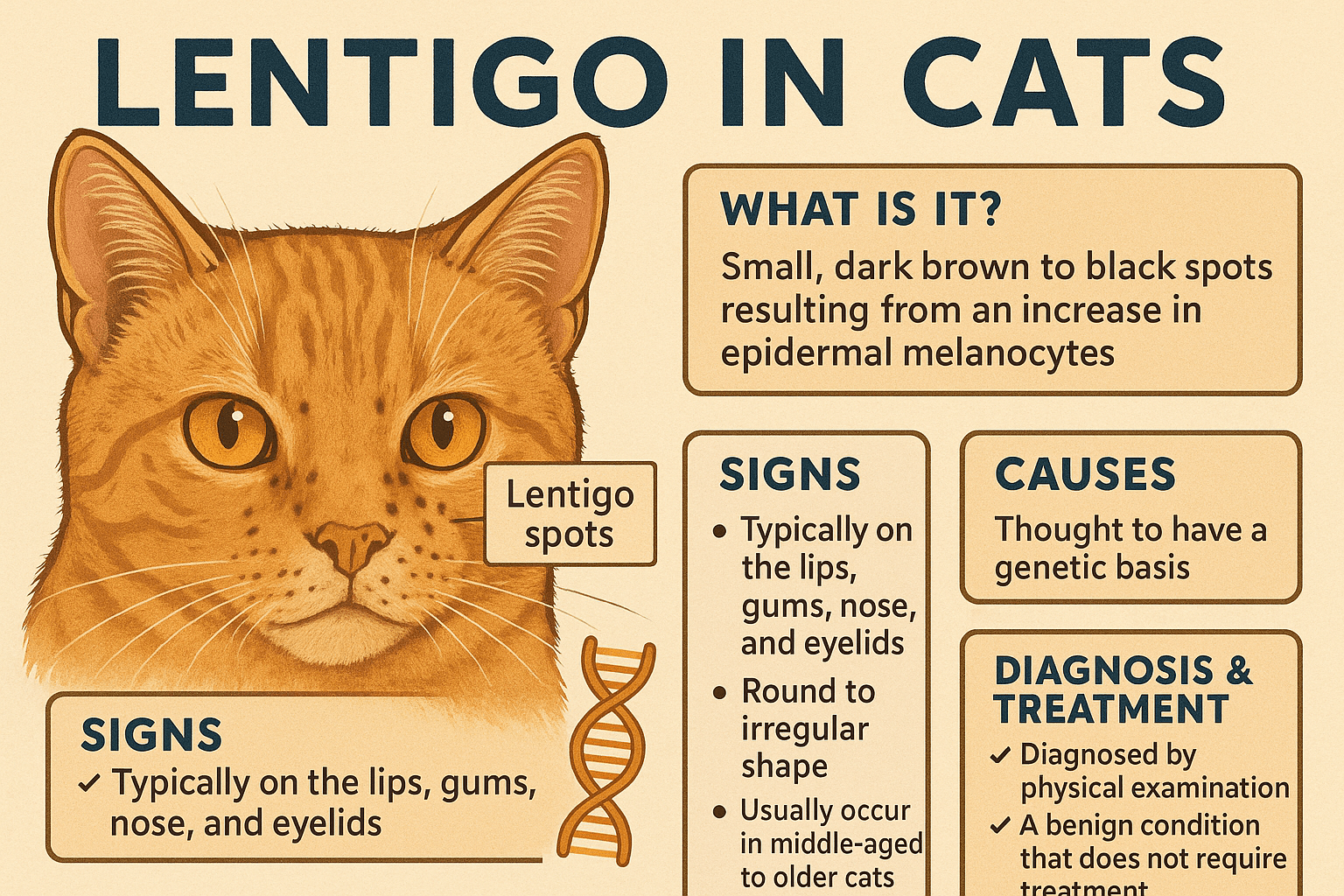Can You Microchip a Cat?
Microchipping is one of the most effective ways to ensure your cat’s safety and increase the chances of being reunited if they ever get lost. This tiny device, no larger than a grain of rice, has become a popular choice for pet owners worldwide. But what exactly is a microchip, how does it work, and is it suitable for cats? Whether you’re considering microchipping your feline friend or simply curious about the process, this guide will answer all your questions. From the benefits to the procedure itself, we’ll explore why microchipping is a smart and responsible step for every cat owner.
Expert Insight on Microchipping Your Cat
“Though it’s tough for cat parents to think about, pets go missing every day. One study found that 15% of pet cats were lost within a five-year span, and it’s not a guarantee that your lost cat will be able to find their way home. Microchipping your cat can help your lost cat be returned to you.”
What Is a Microchip and How Does It Work?
Before deciding to microchip your cat, it’s important to understand what a microchip is and how it functions. This simple yet powerful tool can make a world of difference in keeping your cat safe.
A Tiny Device with Big Benefits:
A microchip is a small electronic chip enclosed in a glass cylinder, about the size of a grain of rice. It stores a unique identification number linked to your contact information.No GPS Tracking Involved:
Contrary to popular belief, microchips do not have GPS capabilities. Instead, they rely on being scanned by a specialized reader to retrieve the ID number.Inserted Under the Skin:
The microchip is implanted under the skin, usually between the shoulder blades, using a hypodermic needle. The process is quick and minimally invasive.Linked to a Pet Database:
Once the microchip is registered, its ID number connects to a database containing your contact details. This allows shelters or veterinarians to identify your cat if found.Permanent Identification Solution:
Unlike collars that can fall off or be removed, microchips provide a permanent form of identification that stays with your cat for life.
Understanding how microchips work highlights their reliability and importance as a safety measure for your cat.

Benefits of Microchipping Your Cat
Microchipping offers numerous advantages that go beyond traditional identification methods. Here’s why it’s considered one of the best ways to protect your cat.
Increases Chances of Reuniting with Lost Cats:
Studies show that microchipped pets are far more likely to be returned to their owners than those without chips.Provides Peace of Mind:
Knowing your cat carries permanent identification gives you reassurance, especially if they are outdoor adventurers.Quick and Painless Procedure:
The insertion process is fast, similar to a routine vaccination, and causes minimal discomfort for your cat.Cost-Effective Solution:
Microchipping is an affordable one-time investment compared to the potential costs of searching for a lost pet.Works Worldwide:
Microchips are recognized globally, making them ideal for traveling with your cat or relocating to another country.
These benefits make microchipping an invaluable tool in ensuring your cat’s safety and well-being.
Check this guide 👉How Much Does It Cost to Microchip a Cat? Best 7 Tips!
Check this guide 👉Do Cats Come Back Home? Best 7 Expert Tips!
Pros of Microchipping | Cons of Microchipping |
|---|---|
Permanent identification | Requires registration to be effective |
Increases chances of reunion | Initial cost may deter some owners |
Quick and minimally invasive process | Rare cases of migration under the skin |
Recognized by shelters and vets | Does not replace collars or tags |
Works internationally | Limited to scanning technology |
How to Prepare for Microchipping Your Cat
If you’ve decided to microchip your cat, preparation ensures a smooth and stress-free experience. Follow these steps to get ready for the procedure.
Consult Your Veterinarian:
Schedule an appointment with your vet to discuss the process and address any concerns you may have.Gather Necessary Information:
Have your contact details ready for registration, including your phone number, address, and emergency contacts.Choose a Reputable Database:
Ensure the microchip provider uses a reliable and accessible pet registry database.Comfort Your Cat Beforehand:
Spend time calming your cat before the appointment to reduce anxiety during the visit.Plan for Post-Procedure Care:
While recovery isn’t typically needed, monitor the injection site briefly to ensure there’s no irritation or swelling.
Proper preparation makes the microchipping process seamless and sets the stage for lifelong protection.
Common Myths About Microchipping Cats
Despite its widespread use, several myths about microchipping persist. Separating fact from fiction helps you make informed decisions about your cat’s safety.
Myth: Microchipping is Painful for Cats:
The procedure is comparable to a routine vaccination and causes only minor discomfort.Myth: Microchips Can Track Your Cat’s Location:
Microchips do not have GPS capabilities; they require a scanner to read the ID number.Myth: Indoor Cats Don’t Need Microchips:
Even indoor cats can escape, making microchipping a crucial safeguard for all felines.Myth: Microchips Cause Health Problems:
When inserted correctly, microchips are safe and rarely cause complications.Myth: Collars Are Enough Identification:
Collars can break or fall off, whereas microchips provide permanent, tamper-proof identification.
Dispelling these myths ensures you understand the true value and limitations of microchipping.
Tips for Maintaining Your Cat’s Microchip
Once your cat is microchipped, maintaining the chip’s functionality is key to ensuring it serves its purpose effectively. These tips will help you keep your cat’s microchip up-to-date and reliable.
Update Contact Information Regularly:
Notify the microchip registry if you change your phone number or move to a new address.Schedule Annual Check-Ups:
Ask your vet to scan the microchip during routine visits to confirm it’s still functioning properly.Keep Registration Documents Handy:
Store your microchip registration paperwork in a safe place for easy access if needed.Educate Family Members:
Ensure everyone in your household knows the importance of keeping the microchip details current.Consider Backup Identification:
Pair the microchip with a collar and tag for added layers of security.
By staying proactive, you maximize the effectiveness of your cat’s microchip.
What to Do If Your Microchipped Cat Goes Missing
Losing a microchipped cat can be distressing, but knowing what steps to take can significantly improve the chances of finding them quickly. Here’s what to do if your cat disappears.
Notify Local Shelters Immediately:
Contact nearby animal shelters and provide them with your cat’s microchip number.File a Lost Pet Report:
Submit a report to your microchip registry to flag your cat as missing in their system.Spread the Word Online:
Post about your lost cat on social media platforms and community groups dedicated to finding lost pets.Search Your Neighborhood:
Walk around your area calling your cat’s name and leaving familiar scents like clothing outside.Check Regularly for Updates:
Stay in touch with shelters and online resources to track any leads or sightings.
Taking swift action increases the likelihood of reuniting with your microchipped cat.
Alternatives to Microchipping for Cat Identification
While microchipping is highly recommended, there are alternative methods to identify your cat. These options can complement or serve as temporary solutions depending on your needs.
Collars with ID Tags:
A collar displaying your contact information is a visible way to identify your cat.Personalized Embroidered Bandanas:
Some owners opt for customized bandanas with their phone number stitched onto them.Temporary Tattoos:
Non-permanent tattoos with identifying numbers can be applied to your cat’s inner ear.GPS Trackers for Pets:
Wearable GPS devices allow you to monitor your cat’s location in real-time.Neighborhood Alert Systems:
Join local pet alert networks where neighbors share updates about lost or found animals.
While alternatives exist, none offer the permanence and reliability of a microchip.
Frequently Asked Questions About Microchipping Cats
Is microchipping safe for cats?
Yes, microchipping is a safe and routine procedure when performed by a qualified veterinarian.
How long does a microchip last?
Microchips are designed to last your cat’s lifetime without needing replacement.
Can I microchip my kitten?
Yes, kittens can be microchipped as early as eight weeks old, provided they weigh enough for the procedure.
What happens if my cat’s microchip isn’t registered?
An unregistered microchip is useless. Always register the chip with your contact details immediately.
Will shelters scan for a microchip if my cat is lost?
Most shelters and vets routinely scan stray animals for microchips to help reunite them with their owners.
Investing in Your Cat’s Safety Through Microchipping
Microchipping your cat is a simple yet powerful way to protect them and give yourself peace of mind. By understanding how microchips work, preparing for the procedure, and addressing common misconceptions, you can make an informed decision that benefits both you and your feline companion. Whether your cat is an indoor homebody or an adventurous explorer, a microchip ensures they always carry a lifeline back to you. With this small step, you’re taking a big leap toward keeping your beloved pet safe and secure for years to come.
How to Find a Lost Cat: Best 7 Expert Tips! Discover actionable strategies to locate your missing cat, understand their behavior, and prevent future escapes with expert advice.
Is Dieffenbachia Toxic to Cats? Best 7 Expert Tips! Discover the dangers of Dieffenbachia, symptoms of poisoning, and how to keep your cat safe with expert advice and preventive measures.
Lentigo in Cats: Best 7 Expert Tips! Discover expert advice on understanding, identifying, and managing lentigo in cats to ensure your feline's health and happiness.
Siamese Cat Lifespan: Best 7 Expert Tips! Discover how to maximize your Siamese cat’s longevity with expert advice on health, care, and lifestyle for a happy, thriving feline companion.





